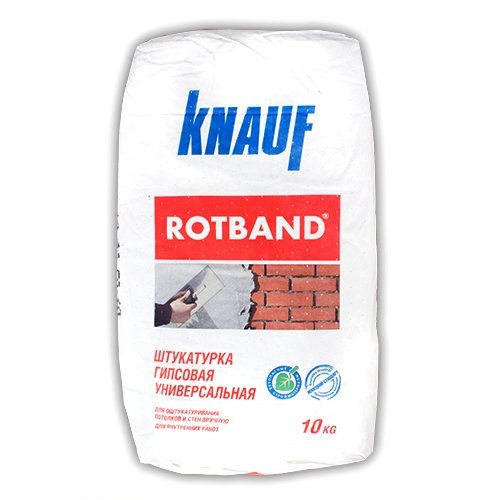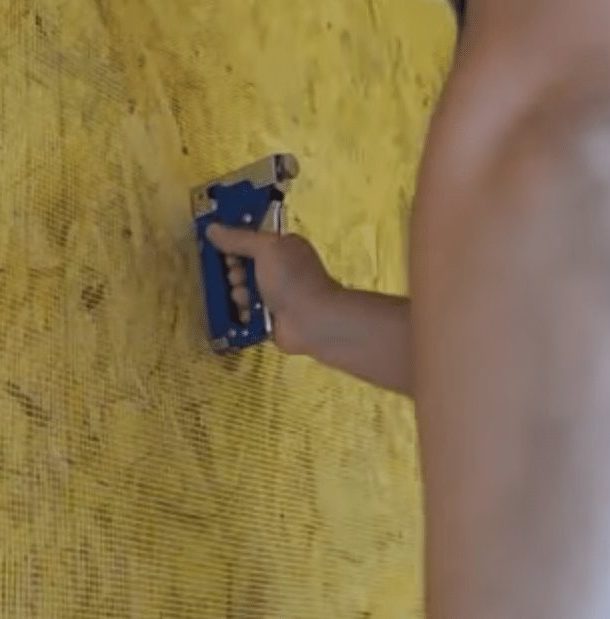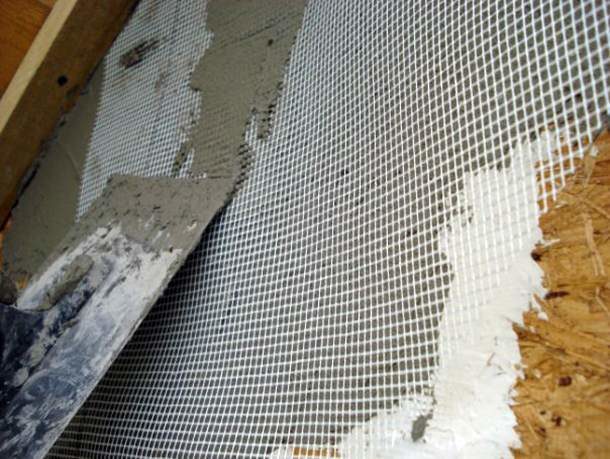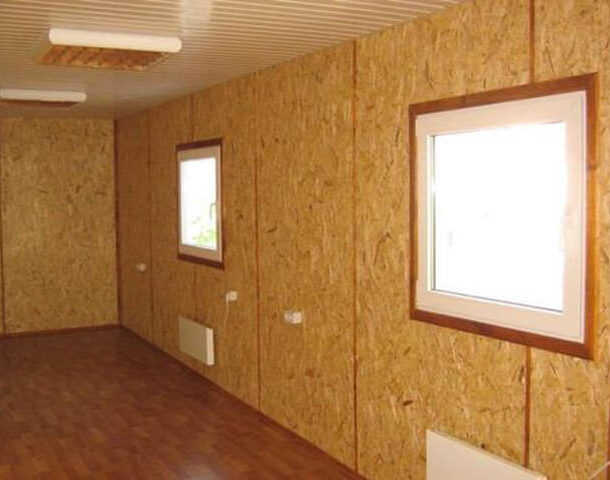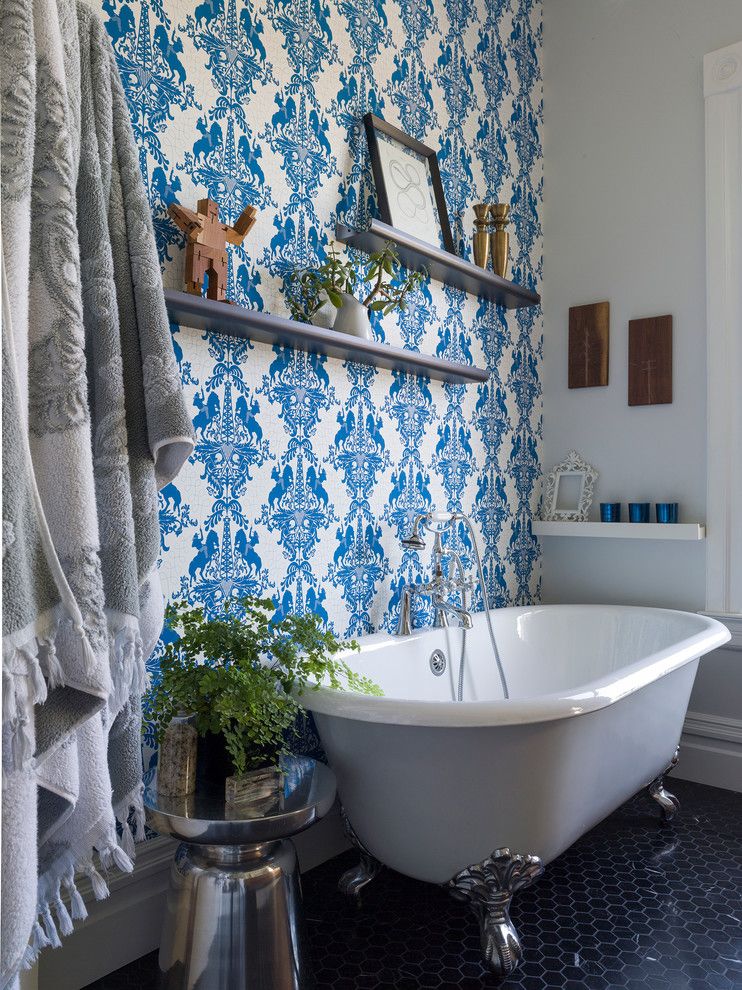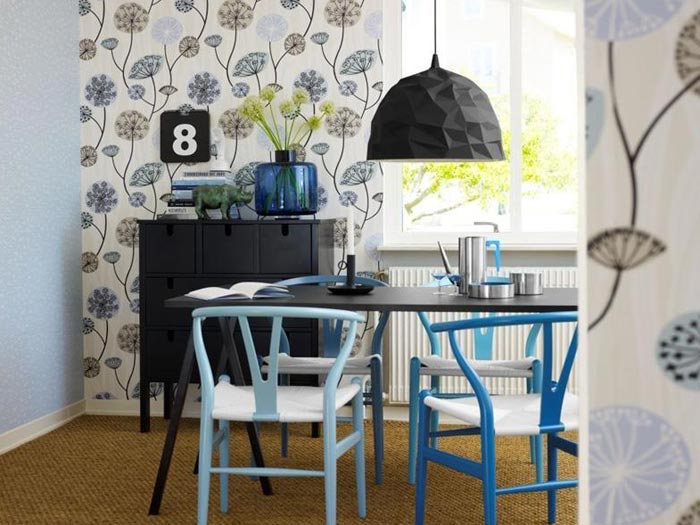5 tips to stick wallpaper on the OSB (OSB) plate
Is it possible to glue wallpaper on the OSB plate? After all, such a need does arise quite often. The answer is definitely yes. The main thing is to properly prepare the surface. There are only 2 ways to do this so that the wallpaper does not peel off after a short period of time and does not change its shade. About, how to paste wallpaper on an OSB plate, read this article.
Consequences of sticking to an untreated surface
Wallpapering untreated OSB boards can lead to a lot of negative consequences. 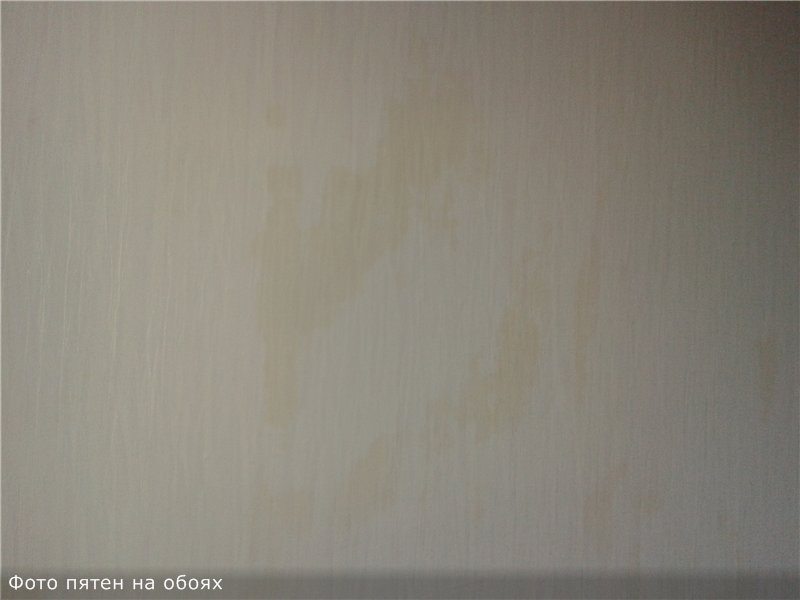 For instance:
For instance:
- Correct installation of OSB boards implies the presence of technological seams between the elements in order to compensate for the linear expansion of the material. In addition, the surface of the plate itself is uneven and inhomogeneous. In this regard, after drying the wallpaper, all these places will be clearly noticeable. Just like hats screws. All the decorativeness of such a finish comes to naught;
- Under the influence of temperatures, synthetic resins and paraffin will be released from the surface of the plates. Accordingly, on the wallpaper they will appear in the form of spots;
- OSB plates are additionally impregnated with special solutions that ensure their moisture resistance, but at the same time reduce surface adhesion with any other composition. Wallpaper glue just going to slide like primers;
- If you still manage to apply glue to the surface, it may cause it to swell. Therefore, it is simply necessary to create an intermediate protective barrier.
 All OSB plates, depending on the formaldehyde content in them, can be assigned to two categories - E1 or E0. All of the above is more true for plates of class E1.
All OSB plates, depending on the formaldehyde content in them, can be assigned to two categories - E1 or E0. All of the above is more true for plates of class E1.
Features of gluing plates of class E0
Stick wallpaper on plates of class E0 is possible with minimal surface treatment of the base. It is enough to close the joints and thoroughly primed the plate.  After that, you can use types of wallpaper:
After that, you can use types of wallpaper:
- Dense vinyl or non-woven wallpaper with a pronounced relief on the surface;
- Cullet. If you will use light shades, we recommend that you first open the plate with white insulating paint;
- Liquid wallpaper. Due to its consistency and ability to level surface irregularities, they can also be applied after priming and sealing joints of the plate
All smooth and subtle types of wallpaper can be glued only after processing the surface of the plate in one of the following ways.
Method number 1 - without putty
This method is often used to reduce finishing time and in the absence of skills in working with building mixtures. 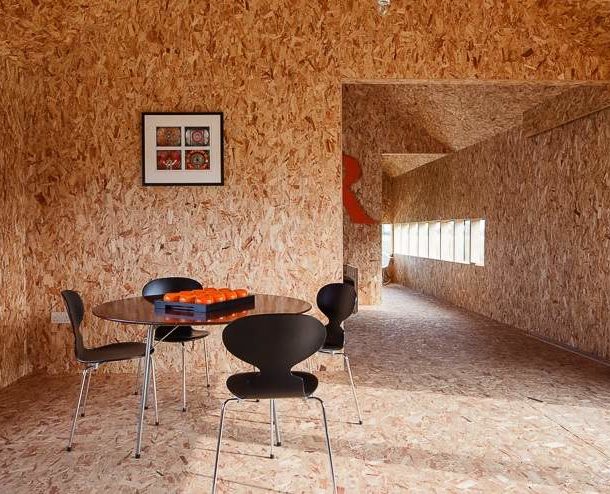 In this case, the surface of the plates processed as follows:
In this case, the surface of the plates processed as follows:
- First you need to close up all the joints between the plates. Acrylic or silicone is best. sealant white or transparent color. If this step is neglected, folds may form on the wallpaper at the junction of the two plates over time. The sealant should in no case protrude beyond the plane of the slabs, its excess can be smoothed out with a rubber spatula, which usually wipe the tile seams;
- When the sealant hardens, it is necessary to give the surface of the slabs smoothness and increase their adhesion level. If you will be gluing smooth and not very dense wallpaper, the surface needs to be sanded.Under thick vinyl or non-woven wallpaper, cullet or liquid, the surface can be treated rough sand paper. At this and the next stage, be sure to use eye protection and respiratory protection - there will be a lot of dust;
- Remove wood dust from the surface. This can be done with a brush;
- Now proceed to the priming. You can use purchased compounds (Ceresit CT17 deep penetration soil has proven itself) or prepare the composition yourself. To do this, mix PVA glue and clean water in a ratio of 1: 3;

- Primed with a purchased composition must be at least 2 times after complete drying of each previous layer. If a home-made solution was used - at least 3;
- Many experts, after drying the soil, claim that the surface is ready for gluing. However, many users from personal experience advise nevertheless to cover the primed slabs with white interior paint. If possible - in two layers. After the paint dries, you can proceed to wallpapering. The procedure will be standard.
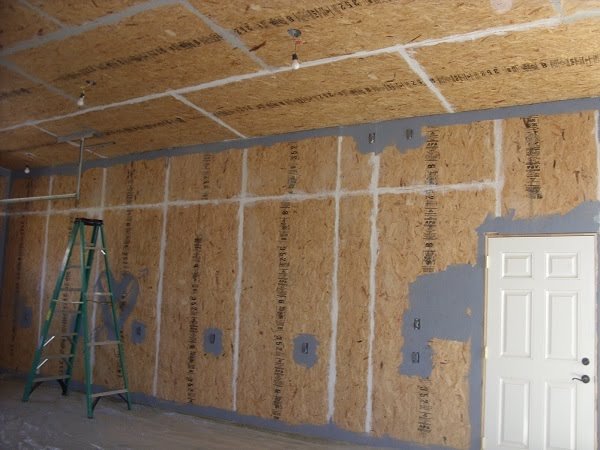
I would like to note right away that if after a few years you have a desire to glue the wallpaper, it will be quite difficult to do this. Cloths adhere to the interior paint very tightly. And secondly, if the walls still shrink, then one sealant filling the seams will not be enough. Over time, these places fail, and the wallpaper will tear. It can be concluded that such the method will be successful only for finishing utility rooms or cottages. For decorating a residential building, it is better to use the second method.
Method number 2 - using putty
This method is more time-consuming and costly, but it will provide the desired result.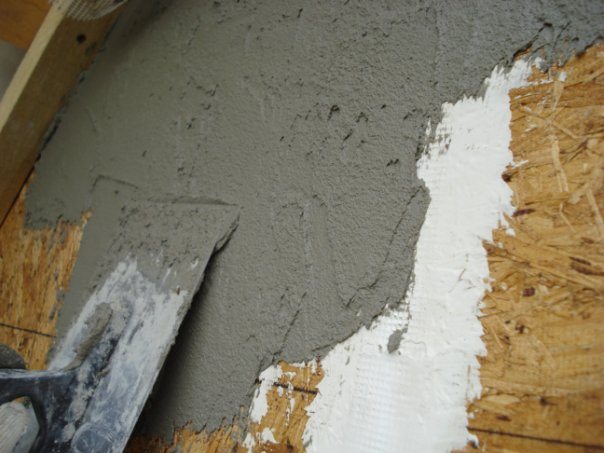
From tools you will need:
- Set of spatulas;
- Mixer and drill;
- Capacity for kneading putty;
- Fur roller with a long handle for applying a primer;
- Construction stapler and staples;
- Painting corners;
- Mesh Serpyanka;
- Sanding mesh and plastic grater with mesh clips.
 Now more details about the process OSB surface treatment:
Now more details about the process OSB surface treatment:
- Similarly to the first method, we close the seams between the plates and ground the surface. Sanding the slabs is not necessary;
- Now we will mask the hats of self-tapping screws and re-close the seams. For these purposes we need plaster. Rothband plaster from Knauf will do;

- With the help of a small spatula, you need to close up all the places, as when sealing joints on drywall;
- As soon as you process the first joint, stick a serpian net over the not frozen solution;
- After you process all the joints, you need to fix the grid on the free sections of the plates. Use the stapler to lock. The smaller the pitch between the brackets, the better. Fasten with a maximum interval of 10-15 cm;

- Begin laying the grid with the outer and inner corners, door and window slopes. Be careful - the grid at the corner should be a single canvas, and not consist of two pieces overlapped;
- After that, fix the paint corners at all the corners you need in the same way, using a stapler over the grid;
- After that, ground the entire surface again;
- Stir a small amount putties and apply the first, not too thick, rough coat and let it dry;
- Strip the surface irregularities with a wide metal spatula, grind the surface with a plaster mesh, clean from dust and apply the soil again;

- Apply a top coat of putty. Let it dry, clean and grind the surface and primer again. By and large, this is already enough. But for best result recommend applying a third layer of finishing putty;
- After drying, the surface is carefully sanded and primed. After that, you can safely proceed to wallpapering.
Little tips
Some more tips to help perform work more qualitatively:
- The joints of the wallpaper panels should not coincide with the joints of the OSB plates;
- Do not neglect reusable primers.The soil closes the small pores in the putty and creates a thin film on its surface, which will prevent the composition from getting wet under the glue;

- Be sure to avoid drafts during and after work.
Subject to all the rules, wallpaper pasted on OSB can last at least 5 years.


